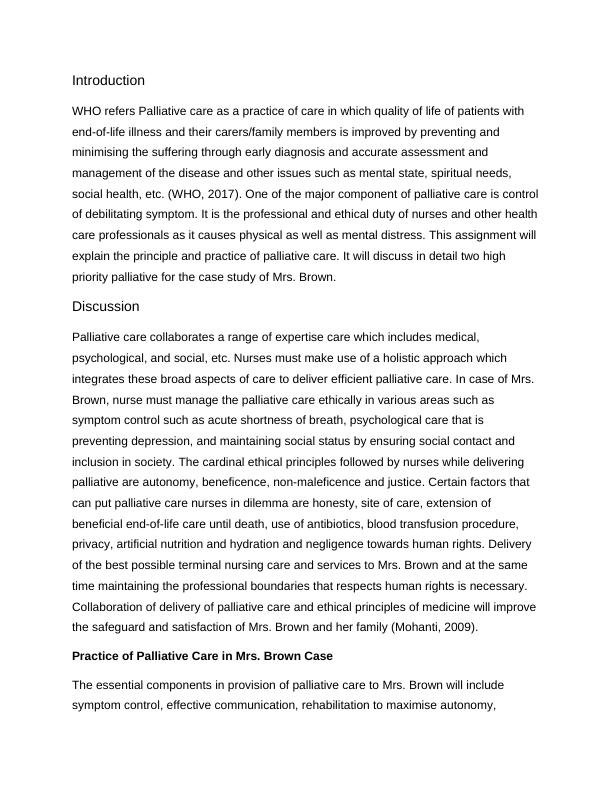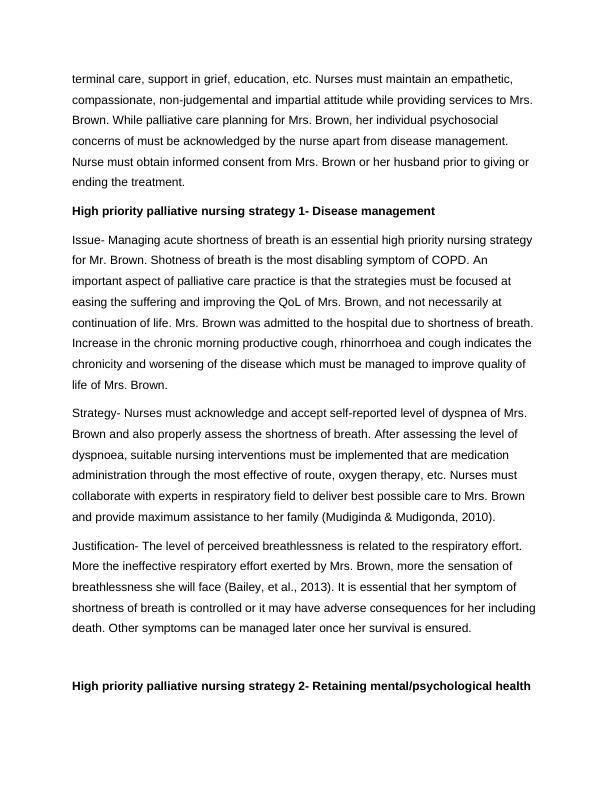Principle and Practice of Palliative Care: A Case Study of Mrs. Brown
5 Pages1331 Words394 Views
Added on 2023-04-17
About This Document
This assignment discusses the principle and practice of palliative care, focusing on a case study of Mrs. Brown. It explores high priority palliative nursing strategies for symptom control and mental health support. The importance of ethical principles in delivering palliative care is also highlighted.
Principle and Practice of Palliative Care: A Case Study of Mrs. Brown
Added on 2023-04-17
ShareRelated Documents
End of preview
Want to access all the pages? Upload your documents or become a member.
Palliative Care: Nursing Priorities and Interventions
|7
|1806
|71
Palliative Care for Mrs. Brown: Nursing Priorities in COPD
|7
|1773
|28
Palliative Care for COPD Patients: Nursing Assignment
|8
|2003
|406
Palliative Care: Strategies for COPD Exacerbation Management
|6
|1682
|50
Palliative Care: Strategies for COPD Patients
|7
|1829
|101
Palliative Care: Holistic Approach and Nursing Priorities for COPD Patients - Case Study Analysis
|7
|1901
|383


